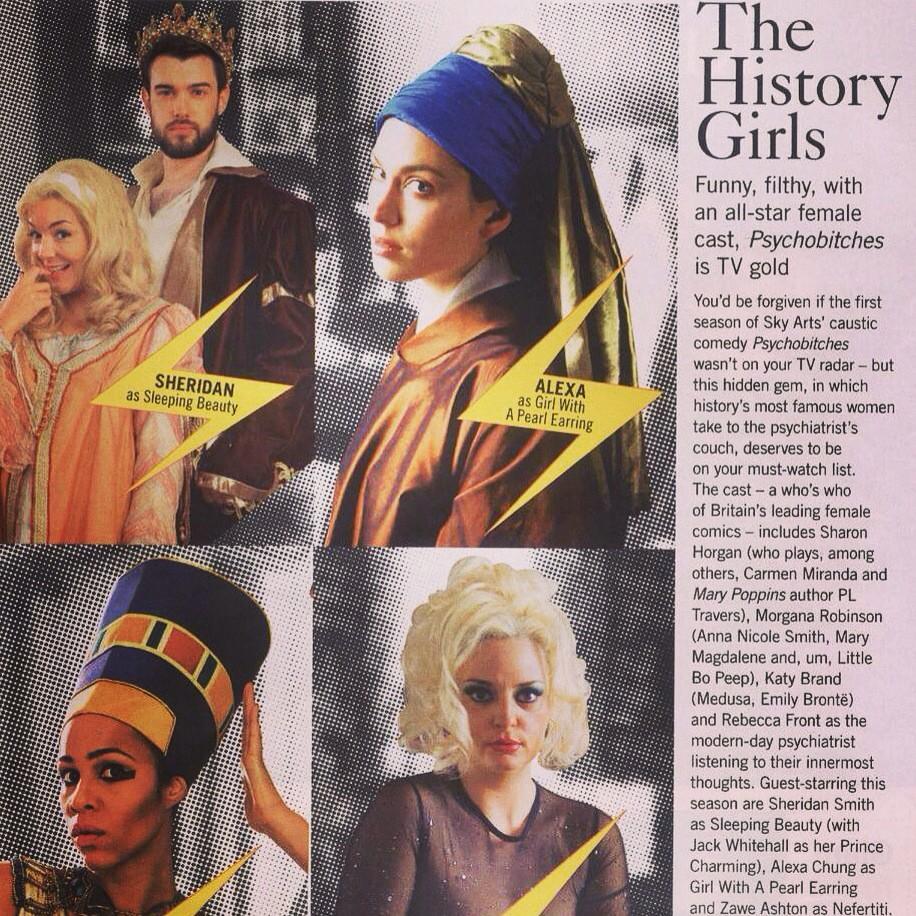Girl with a Pearl Earring.
This piece was painted by the dutch artist Johannes Vermeer and is one of his most recognized masterpieces to date. It is currently housed in the Hague, Netherlands, and has been referred to as
'the Dutch Mona Lisa' and
'the Mona Lisa of the North'.
The main focus is, of course, the pearl earring (hence the title of the painting) and this factor is reinforced through artist's use of lighting and positioning of the feminine figure. The lighting is an incredibly important aspect to this piece as it doesn't fully reveal the earring, but instead is painted to slightly 'reflect' off of it's surface and thus bring it to the viewers attention and ensuring the eye is automatically drawn to it. Vermeer was an artist renowned for his use of colour within his pieces and his 'signature' use of ultramarine can be seen in this particular painting (located on the turban headdress, the subject's neck and her back). This colour contrasts against the other, earthier tones of the piece and keeps the overall image from appearing dull and bland. His exquisite skill in under-painting also allows the painting to take on an intense and realistic depth, and the 'Dutch custom' use of a dark background enhances and accentuates the highlighted subject nicely.
Rembrandt, a highly regarded painter and print-maker in European art and one of the most important in Dutch history, was the man behind the popularity boost of the
'tronie' (17th-century Dutch for 'face') and it is suggested that Vermeer was both inspired and influenced by his works.
If we look at and compare these two paintings of Rembrandt's
('Girl at a Window' & 'Flora') to Vermeer's 'Girl with a Pearl Earring', there are some evident similarities between each of the individual works. Rembrandt's composition, earthy tones, and feminine subjects have seemingly provided Vermeer with some guidance during his studies, and it's fascinating to see how such past influences led to the masterpiece we know and admire today.
There are also several other paintings which are compared to Vermeer's classic, such as:
 |
Portrait of a Woman,
Robert Campin,
1430 |
 |
Lady Wearing a Gauze Headdress,
Rogier Van Der Weyden,
1445 |
 |
Portrait of a Young Girl,
Petrus Christus,
1460 |
 |
Man in a Turban,
Jan Van Eyck,
1433 |
And lastly 'Smiling Girl' - a painting which was donated in 1937 to the National Gallery of Art in Washington by a collector named Andrew W. Mellon. It was originally thought to be another of Vermeer's work but it is now, in fact, considered a fake:
Each of these individual works show striking similarities to the 'Girl With a Pearl Earring', whether it's in the composition of the piece, the dark backgrounds, the portrayal of headdresses (albeit they differ - they're still similar and create a recurring theme which stems from the original) and even the glowing complexions and expressions of the subjects.
Finally, with the popularity of this proclaimed masterpiece, comes a series of more contemporary adaptations (including a film).
One particular adaptation was done by the notorious artist
'Banksy' in October 2014 and appeared on a wall in Bristol Harbourside. This modern remake features an alarm box in place of the signature pearl earring and the piece was comically dubbed "Girl with the Pierced Eardrum". This piece is a brilliant and contemporary parody of such a classic, and the idea that it's displayed on an urban canvas with the modern twist of the alarm box allows us to see how art and design has progressed over the years.
This image is taken from the movie adaptation mentioned earlier (the actress being Scarlett Johannson) and it has truly captured the essence of the original - everything down to the dark background, lighting and glossy, parted lips alongside an innocent expression has been recreated effectively. The concept of recreating the painting with a photograph and giving it a story through a movie, allows us to reflect on just what we can achieve with modern technology and helps bring this classic to light for a contemporary audience.
Alexa Chung took part in another recreation of the Girl with a Pearl Earring - playing her as a character in
Sky Arts 'Psychobitches', definitely a twist on the previous parody (as well as the original) and perhaps an unexpected one at that. Still, it's fascinating to see how such things can be twisted and changed to meet contemporary tastes and interests.
Finally, Dorothee Golz is an artist who lives and works in Vienna, Austria, and has a series of pieces which takes old works of art and recreates them in modern scenarios. Her quality of work is astounding and she blends the original, painted faces in so well that it's hard to believe they're not from this time. The seamless blending paired with the modern backgrounds makes for a stunning finished product and to see such well-known classics in a present-day environment is not only surreal but appealing, too.

It truly is amazing to see how one singular image, having blossomed from influences from another time, can help influence and create works in another, more current point in time. As evident from the research above, the Girl with a Pearl Earring by Vermeer was influenced by a master in the Dutch arts, and later became known and admired as a masterpiece itself - eventually influencing the work we see now. To know that these artistic chain reactions happen constantly and will continue to do so is incredibly exciting and the evolution of art and design will show that original classics can always be taken further.
Sources used:


